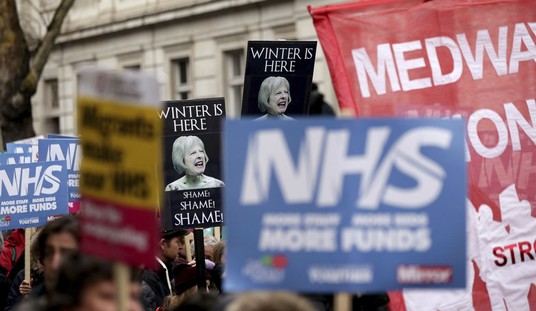Over the weekend, I published what I called the Unexpected Unemployment Chart of the Day from Uncommon Misperceptions. The chart shows that the trend on initial jobless claims has not improved since November, and in fact the trendline shows a slight increase since that point, despite media and White House spin on supposedly improving job numbers.

After publishing the chart, I got several e-mails criticizing me for (a) not having cited the reference for the origin of the numbers, which is more a criticism of Uncommon Misperceptions, and (b) not having shown the entirety of 2009 to show that the job market did improve. In order to answer both criticisms, I downloaded the numbers myself from the Department of Labor (which doesn’t make it easy, by the way) and created my own spreadsheet for initial jobless claims data. I then created a few charts showing some of the context which critics claimed was missing from this particular chart.
First, let’s look at the data from the beginning of 2007, before the recession began, and establish a baseline:

Even throughout 2007, as the economy slowed, initial jobless claims didn’t rise above the “floor” of 325,000 that most economists consider the point where net job creation ends. There was a huge burst of initial claims in the fall and winter of 2008/9, but even after that we’ve never approached that floor, or even come close to it.
Now let’s look at the data since the beginning of 2009, which critics complained was ignored:

Obviously, the trend line will show a decline, since we’re seeing the peak of the initial claims during the winter of 2009. Bear in mind that the Obama administration’s stimulus package was passed in February but didn’t really start spending until the third quarter of 2009, though. This is what UM’s chart shows, but it left off October. Let’s restore it:

With October added, the trendlines do show a slight decline (I added a trendline for non-seasonally-adjusted claims, just to test the seasonal adjustments). But that decline is much shallower than the one shown for the chart starting in January 2009, which strongly suggests that the bulk of the slowdown occurred prior to Obama’s stimulus taking place. Also, remember that unemployment is cumulative — which means for a situation to actually improve rather than just being less bad, we need net job creation — which we still haven’t had or come close to reaching.
Now let’s look at just 2010, after the stimulus package has been in place, to see whether we’re maintaining that momentum:

That’s slightly more than a full quarter, and the trendline has almost flattened out. The situation has not improved; the normal run of eliminating the most at-risk jobs took place in a big recession. Job losses always slow down after the most at-risk jobs get terminated, simply because it’s tougher to eliminate jobs as layoffs continue. We aren’t seeing a rebound in net job creation, at least not yet, and it’s at least two quarters overdue, in the context of all other post-WWII recessions.
That’s the point that Uncommon Misperceptions made, and it’s still correct.
Update: On the legends, IC-NSA means “initial claims, non-seasonally adjusted,” and IC-SA means “initial claims, seasonally adjusted.” IC-SA is the measure commonly used.








Join the conversation as a VIP Member